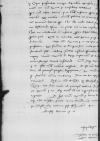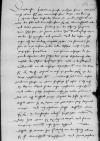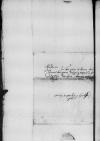Letter #2344
Ermland (Warmia) Chapter to Ioannes DANTISCUSFrauenburg (Frombork), 1540-09-12
| received Heilsberg (Lidzbark Warmiński), 1540-09-13 Manuscript sources:
| ||||||
Text & apparatus & commentary Plain text Text & commentary Text & apparatus
Reverendissimo in Christo Patri et Domino, domino
Reverendissime in Christo Pater, excellentissime domine antistes, domine gratiose.
Obsequia nostra paratissima sint in Reverendissimae Paternitatis Vestrae vota ex sententia destinata.
Reverendissime ac gratiose Domine.
Non est incognitum Vestrae Reverendissimae Paternitati, quibus verbis quaesti sumus de damnis et praeiudiciis per nobilem dominum
Nam proxima sexta feria unum de medio fratrum nostrorum una cum Reverendissimae Paternitatis Vestrae capitaneo Braunsbergensi etc. eodem ablegavimus. Qui compererunt ita liberum alvei fluxum obstructurum et contra patria iura et consuetudinem ab una ripa ad alteram palis, roboribus, saxis et terra impeditum, quod lignis asseribus et aliis necessariis in civitates
Fuisset itaque ex re et Reverendissimae Paternitatis Vestrae, et nostra iam longe ante illustrissimo
Scripsimus nos quoque ad
Ut autem Reverendissima Paternitas Vestra cognoscat ad perfectum, quae praeiudicia et damna sint nobis per dic[tam] structuram facta, dedimus praesentibus nostris officialibus id negotii Vestram Reverendissimam Dominationem desuper informandam et de omnibus circumstantiis latius resolvendi.
Si itaque Reverendissima Paternitas Vestra istis nostris motivis accesserit et ipsa etiam litteras dare ad
Et his Vestram Reverendissimam Paternitatem aeterno Deo, atque nos eiusdem gratiae unice commendamus.
Eiusdem Reverendissimae Paternitati Vestrae obsequentissimi
Postscript:
Item 23 articulus tractatuum inter
Es sol das tieff bey der
[1 ] The copy of Ermland chapter’s letter to Prince Albrecht preserved in ms BCz 1597, p. 1121-1123; register printed in cf. Herzog Albrecht von Preußen und das Bistum Ermland (1525-1550). Regesten aus dem Herzoglichen Briefarchiv und den Ostpreußischen Folianten, ed. by Stefan Hartmann, Köln - Weimar - Wien, 1991 ⌊HARTMANN 1525-1550cf. Herzog Albrecht von Preußen und das Bistum Ermland (1525-1550). Regesten aus dem Herzoglichen Briefarchiv und den Ostpreußischen Folianten, ed. by Stefan Hartmann, Köln - Weimar - Wien, 1991 ⌋, No. 695, p. 373






